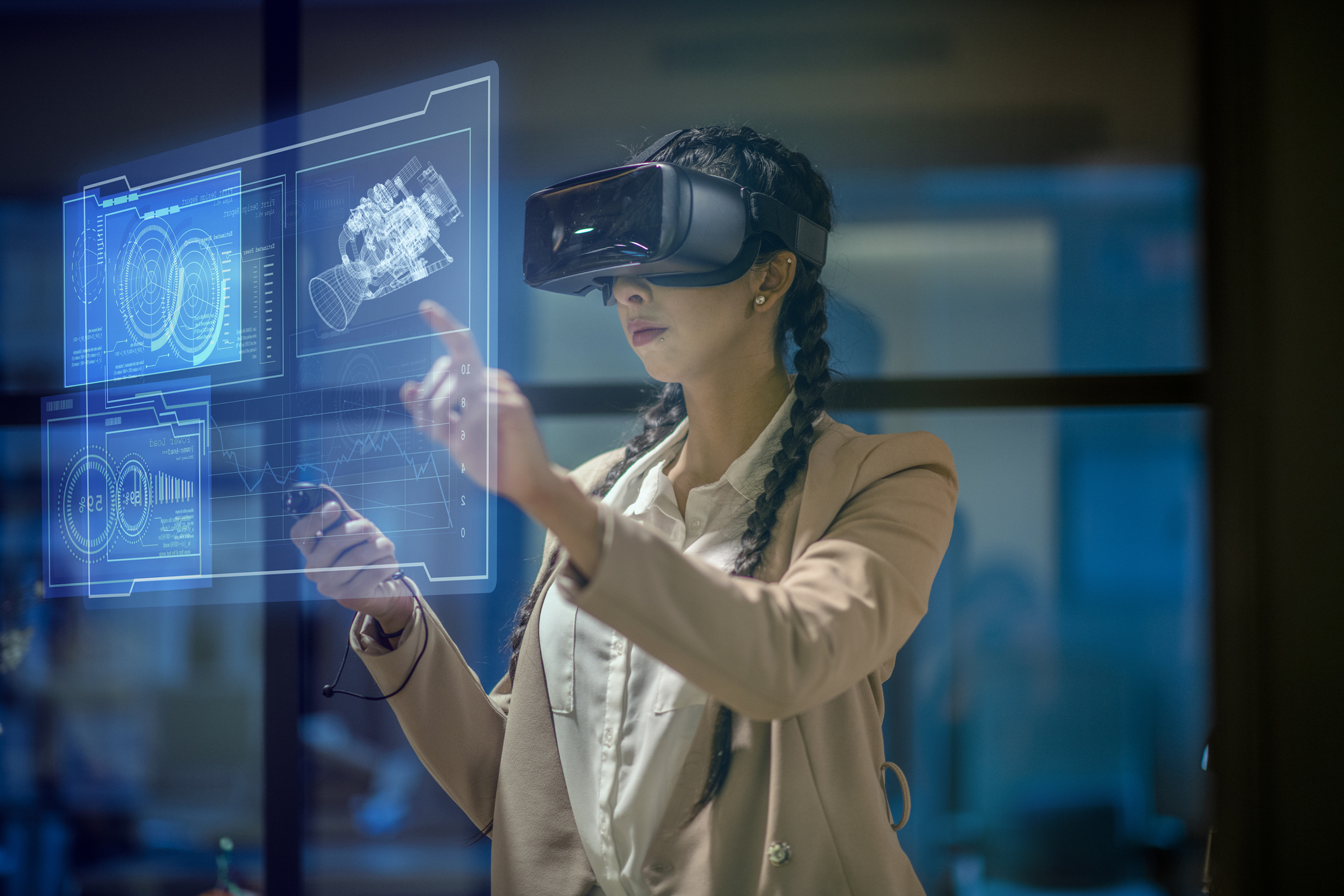SOMETIMES IT TAKES a pandemic to give certain technologies a boost. That’s what happened with augmented and virtual reality (AR/VR) solutions that are now making inroads into a growing number of business environments, including SMBs.
For channel pros, the trend creates new opportunities to widen their breadth and win new customers. ABI Research estimates the compound annual growth rate of AR/VR technologies at a whopping 75% through 2027. In manufacturing alone, the number of active AR/VR users jumped from 400,000 in 2018 to 2.6 million in 2021, says ABI Research Director Eric Abbruzzese.
Remote Tasks
AR is becoming especially popular with remote tasks involving maintenance, instruction, and training. Donning eyeglasses that digitally superimpose images on physical assets, users can troubleshoot or learn how to use a machine while remotely receiving instruction from an expert.
AR-supported remote assistance enabled tasks the pandemic otherwise would have postponed. It also cuts costs. A $3,000 pair of smart glasses can pay for itself on first-time use. When downtime occurs, instead of waiting a day or more for a technician, a company can resume operations within an hour. “They also avoid a round-trip travel expense for an expert,” Abbruzzese says.
“When workers were unable to travel or even work on-site during the pandemic, concessions had to be made to keep operations steady. Remote assistance fit the bill very well,” he adds.
Brandon Fuhr, co-founder of XReps, which has an extended reality (XR) football training platform, expects to see “assisted hands” solutions become even more common thanks to recent advancements in AR eyewear. “These solutions help field workers by providing them data overlaid in the real world, whether it’s a maintenance technician working on a specialized piece of equipment or a first responder at the scene of an emergency.”
In retail, ecommerce merchants are using AR to “show customers what a product looks like in their physical space, such as a couch in their living room,” says Fuhr. And in stores, AR is being used to map out item locations, says Peter Jamack, CTO of Pagarba Solutions, which provides computer vision and AI solutions. “It’s more custom mapping but people also have called this AR.”
VR solutions, meanwhile, are getting popular in real estate for virtual or self-guided tours of properties, says Fuhr. Elsewhere, VR is making inroads into areas such as surveillance and skills and safety training.
Uses of AR and VR are expected to multiply in coming years too, as companies leverage the technology to cut costs, drive operational efficiencies, and improve user experience.
Abbruzzese says the learning curve for AR/VR is flattening swiftly as manufacturers put more effort into the user experience and add functionality through gestures and voice activation. “Today, UI/UX is a more prevalent focus, and so most users can get up to speed in minutes,” he says.
Technology developed for gaming is delivering life-like simulations that can be used in areas such as training, says Fuhr. “Game engines provide a huge jump forward in interactivity.”
For instruction, users can leverage online courses from providers such as Udemy that make AR/VR skills “accessible to anyone willing to put in the time and effort,” he says.
But Is It Profitable?
How profitable AR/VR is depends on both the platform and the value a provider adds to the solution stack, says Fuhr. For instance, those who grow their own internal XR development capabilities will realize higher profits than those who outsource.
But even without in-house development resources, providers can make money through consulting, implementation, device management, and ongoing support, he says. “As time passes, expect to see increased availability of point solutions and no-code offerings which enable channel pros to deliver tailored industry solutions without coding skills.”
PEDRO PEREIRA is a freelance writer in New Hampshire who has covered the IT channel for two decades.
Image: iStock














